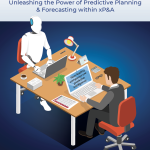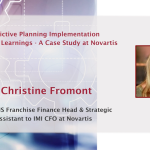The International FP&A Board members gathered in Zurich for the 16th time since the chapter launch. On November 7, the discussion focused on mastering Predictive Planning and Forecasting (PPF), a modern approach to organisational planning that allows us to enhance corporate agility.
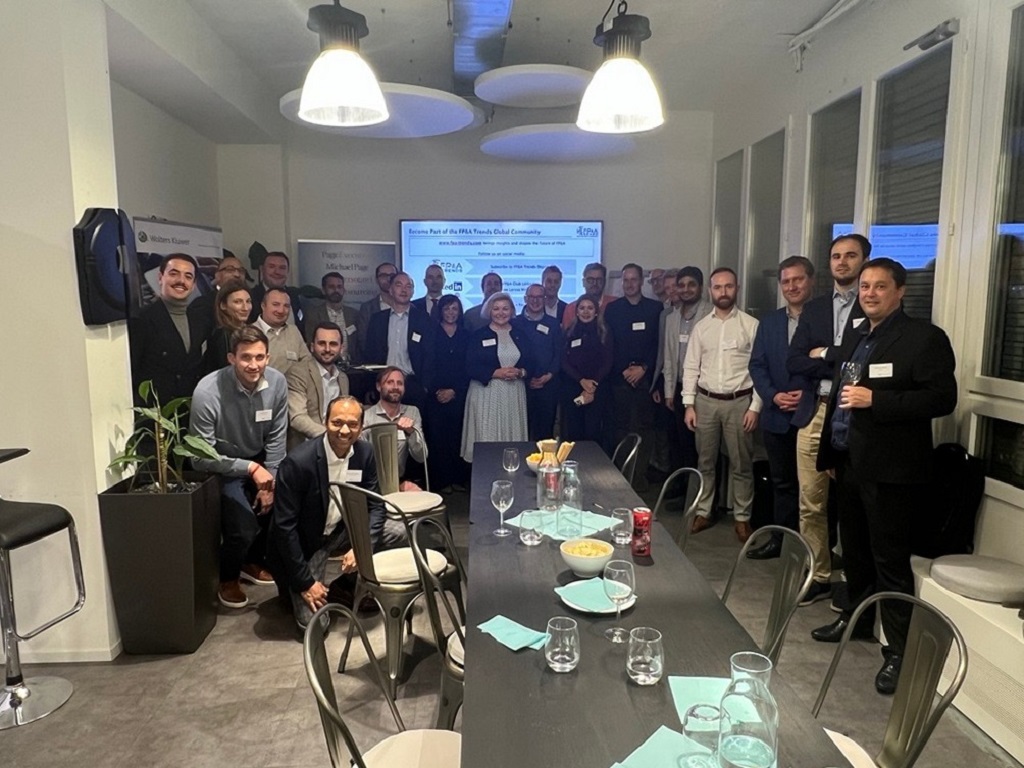
Figure 1: Zurich FP&A Board №16, November 2024
Larysa Melnychuk, CEO of FP&A Trends Group and Founder of the International FP&A Board, chaired the meeting sponsored by Wolters Kluwer/CCH Tagetik in partnership with Page Executive. 28 senior finance practitioners from top-tier global and local companies such as Takeda Pharmaceuticals, Sonova, Lonza, Novartis, Swissport, Ecolab, Holcim, Mondeléz International, Straumann Group, attended this event and gathered in a cosy Page Executive’s office.
In this article, we are recollecting the most interesting insights from this meeting.
What Can Predictive Planning and Forecasting Bring Us?
We had a quick discussion about the “buzz” words that come to mind when talking about the potential impact of Predictive Planning and Forecasting (PPF) on organisations.
The list below summarises the most frequent insights cited during the forum:
- Agility
- Reliability
- Volatility
- Transformation
- Overwhelming
- Faith
- Future
- Insights
- Efficiency
- Acceptance
- Automation
- Hype
- Actionable
The Zurich FP&A Board members also emphasised the importance of accurate data, dynamic driver-based models, and advanced analytics. Larysa Melnychuk highlighted how the transition from traditional methods to predictive approaches happens. FP&A teams are now prioritising efficiency, collaboration, and adaptability. The figure below summarises the essence of Predictive Planning and Forecasting.
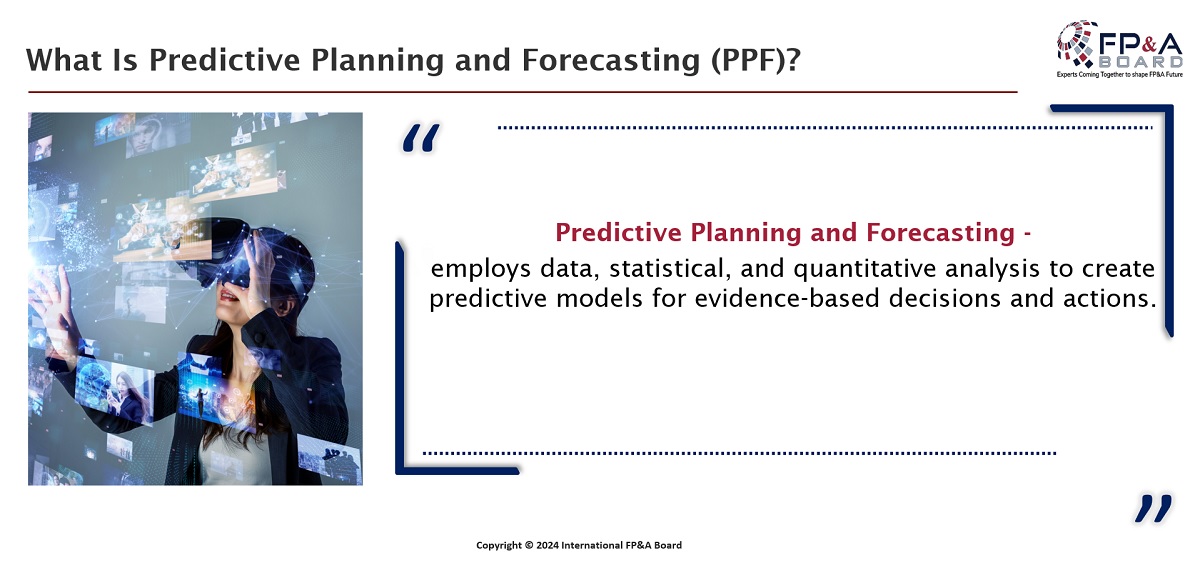
Figure 2
Boosting Organisational Agility with Predictive Planning and Forecasting
In addition, we discussed how agility can be measured. The audience provided their input on the duration of Scenario Planning within their organisations. The votes were nearly equally split between two options – scenarios can take less than a week to run, and more than a week is needed. Overall, it echoed the stats from the 2024 FP&A Trends Survey, as only 22% of the respondents can run scenarios, while 78% are struggling to do so. Attendees agreed that several crucial factors may help us improve our agility:
- Understanding the data
- Data governance and sources are key
- Data and models need to be connected
- Establish key drivers to run an automated process
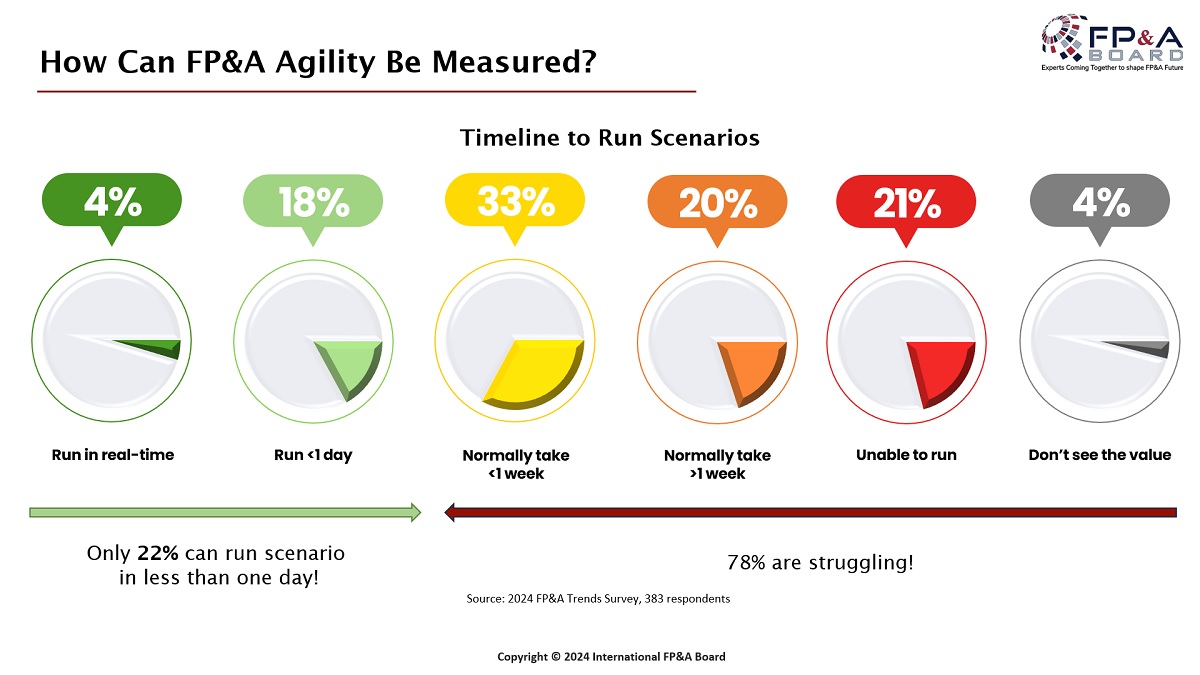
Figure 3
The Difference between Traditional and Predictive Planning
The forum also touched upon the distinction between Predictive Planning and Forecasting and the traditional approach to planning. The slide below highlights the limitations of traditional approaches, such as fragmented data, rigid models, and slow, Excel-driven processes. In contrast, PPF leverages real-time, integrated data, Predictive Analytics, and AI/ML technologies, enabling harmonised, dynamic, and collaborative decision-making for greater efficiency and agility.

Figure 4
Leverage 5 FP&A Team Roles and the FP&A Trends PPF Maturity Model for Success
Larysa Melnychuk underscored the importance of the five FP&A team roles (as shown in Figure 5) for PPF. These roles should be combined to orchestrate a symphony of effective Predictive Planning, but it’s important to highlight the diversity of competencies needed to achieve the best-in-class FP&A.

Figure 5
Finally, the first part of the discussion brought to the audience’s attention the unique tool for reaching the leading state of Predictive Planning and Forecasting. The FP&A Trends PPF Maturity Model is a framework covering six dimensions and five stages to allow you to tailor a roadmap for your transformation journey towards PPF.
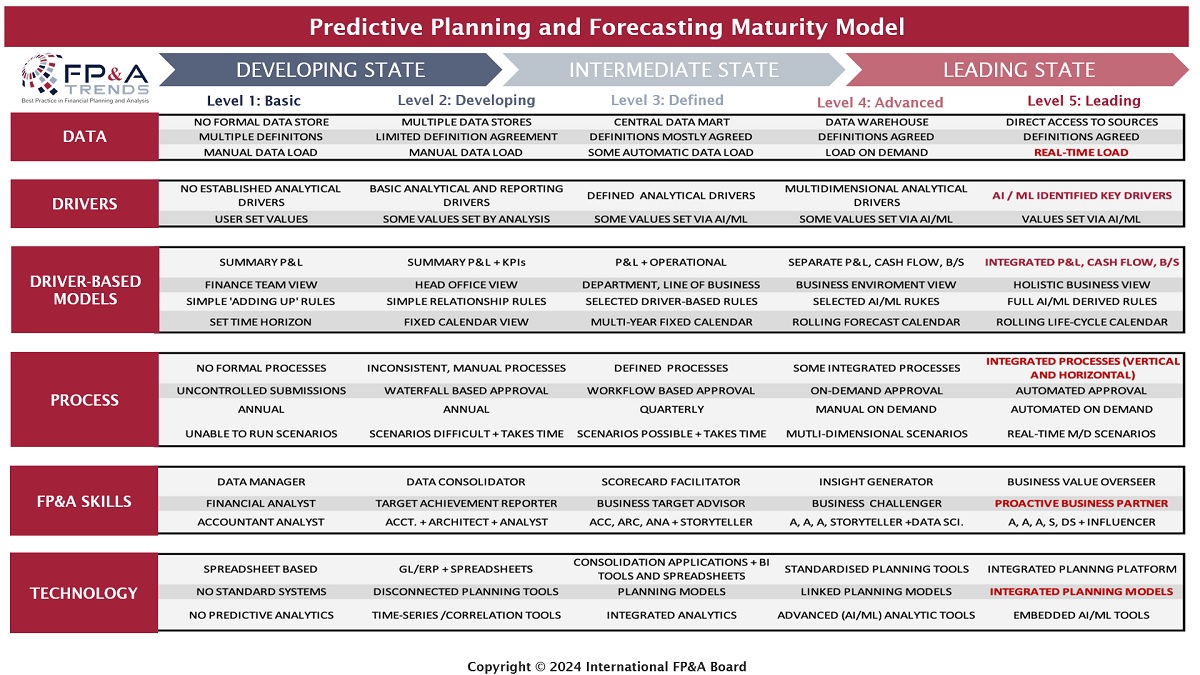
Figure 6
Group Work Insights
The attendees were asked to share their ideas about transitioning to PPF in small groups. Each group had to discuss a specific aspect and present their insights to the rest.
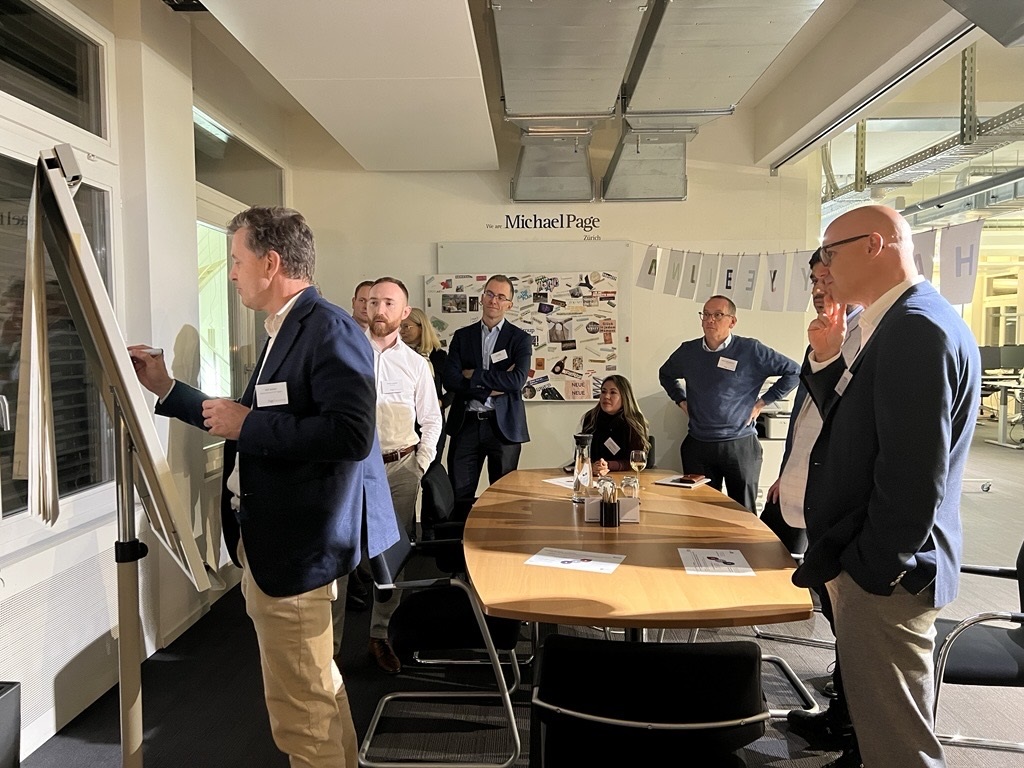
Figure 7: Group Work, Zurich FP&A Board №16, November 2024
The feedback from the small group sessions was as follows:
Dynamic Driver-Based Model Development:
- Understanding drivers
- Clean and consistent data = solid base
- Data science capability
- Incremental automation for success
Process Improvement:
- Transparency
- Being able to explain it to different stakeholders
- Factoring in different factors both from internal and external environments
- Setting clear objectives
Technology and Analytics:
- Data quality management
- Leveraging computing power/cloud solution
- Technology should aid decision-making
- Buy-in from stakeholders
- Used for target setting/long-term vs short-term
- Integrated IT landscape
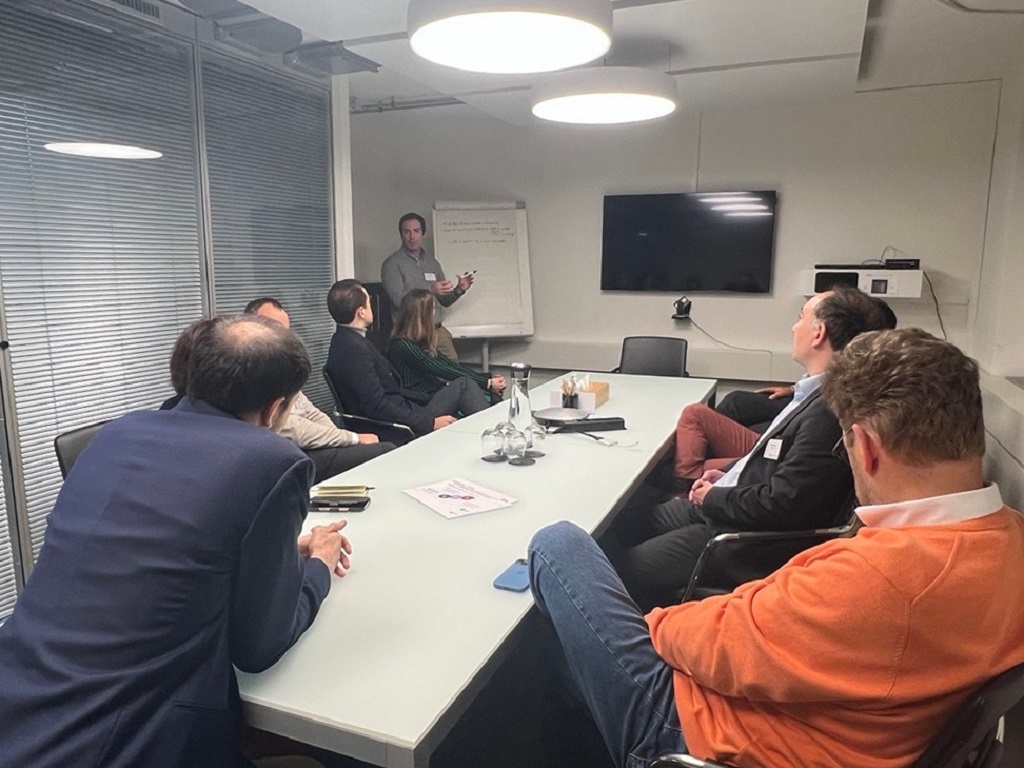
Figure 8: Group Work, Zurich FP&A Board №16, November 2024
The meeting concluded with an engaging networking session, allowing participants to exchange ideas and foster new professional connections.


